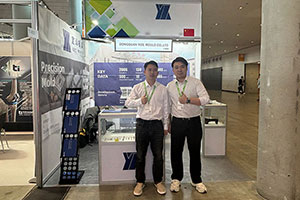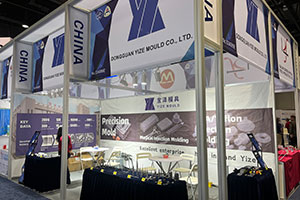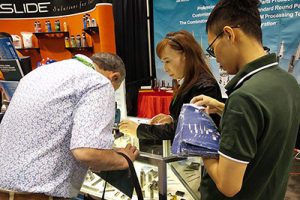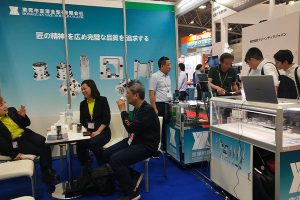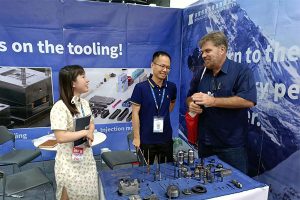Unlocking the Environmental Protection Secrets of Tungsten Carbide Molds
In the current era where the wave of environmental protection is sweeping across the globe, the manufacturing industry is undergoing a profound green transformation, and the requirements for environmental performance […]
In the current era where the wave of environmental protection is sweeping across the globe, the manufacturing industry is undergoing a profound green transformation, and the requirements for environmental performance have reached an unprecedented level. Tungsten carbide molds, as an indispensable key tool in the manufacturing industry, have their environmental performance akin to a “green engine” for the sustainable development of enterprises. It is not only closely related to the long-term development of enterprises themselves but also intricately intertwined with global environmental protection goals. So, how exactly can we accurately evaluate the environmental performance of tungsten carbide molds? This article will conduct a comprehensive analysis from multiple dimensions, including material selection, production process, use and maintenance, and waste disposal, providing a practical and detailed guide for evaluating the environmental performance of tungsten carbide molds.
I. Material Selection: The Quest for Green Sources
The environmental journey of tungsten carbide molds begins with the crucial step of material selection. High-quality tungsten carbide materials should be like gifts from nature, possessing good recyclability and reusability to minimize resource waste and environmental pollution. When evaluating the environmental performance of materials, the following aspects need to be emphasized:
Our factory business: carbide parts, mold parts, medical injection molds, precision injection molds, teflon PFA injection molding, PFA tube fittings. email: [email protected],whatsapp:+8613302615729.
- Traceable Environmentally-Friendly Minerals: Gain an in-depth understanding of the sources of tungsten carbide materials and prioritize those from environmentally-friendly and sustainable mineral resources. This is like injecting a “stream of green vitality” into the molds, preventing the use of materials with unknown origins from the source and effectively reducing potential environmental risks.
- Pure and Harmless Composition: Conduct a detailed chemical composition analysis of tungsten carbide materials to ensure they do not contain harmful substances such as heavy metals and radioactive elements. This prevents these “environmental killers” from being silently released during use and causing pollution to the ecological environment.
- Easy and Efficient Recycling: Evaluate the recyclability of tungsten carbide materials, understanding their recycling rates and the environmental impact of the recycling process. Prioritize materials with good recyclability, which is like opening a “green channel” for waste disposal, reducing treatment difficulty and costs.
II. Production Process: The Practice of Green Manufacturing
The production process of tungsten carbide molds is an important battlefield for evaluating their environmental performance. An environmentally-friendly production process should function like an efficient “green factory,” reducing energy consumption, lowering emissions, and improving resource utilization. The specific evaluation points are as follows:
- Energy Conservation, Consumption Reduction, and Emission Reduction: Comprehensively evaluate the energy consumption during the production process of tungsten carbide molds, covering various aspects such as electricity, gas, and fuel. By optimizing production processes and equipment, infuse a “energy-saving gene” into the production process, reduce energy consumption, and minimize greenhouse gas emissions, enabling production and environmental protection to coexist harmoniously.
- Strict Emission Control: Exercise strict control and treatment over pollutants such as wastewater, waste gas, and waste residues generated during the production process to ensure that emissions comply with national and local environmental protection standards. Employ advanced environmental protection technologies and equipment, which is like having a “precision key” for pollutant treatment, improving treatment efficiency and safeguarding blue skies and clear waters.
- Enhanced Resource Utilization: Increase the utilization rate of raw materials and reduce the generation of scraps and waste. Optimize the production process, lower the defect rate, and improve product quality and stability, allowing every resource to be fully utilized and achieving “maximization” of resource utilization.
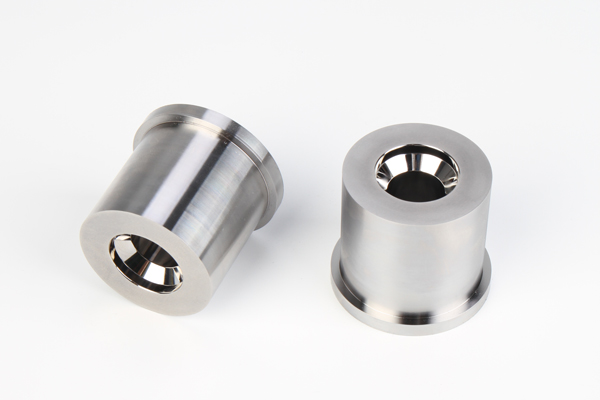
III. Use and Maintenance: The Guardianship of Green Operations
The use and maintenance of tungsten carbide molds also have an impact on the environment. Therefore, when evaluating their environmental performance, the following aspects need to be considered:
- Environmentally Friendly Lubrication and Cooling: Select appropriate lubricants and coolants to ensure the molds receive good lubrication and cooling effects during use. Prioritize the use of environmentally-friendly lubricants and coolants, which is like putting on a “green protective suit” for the molds, reducing the emission of harmful substances.
- Green Cleaning and Maintenance: Regularly clean and maintain the molds to extend their service life. Use environmentally-friendly cleaning agents and maintenance materials to reduce the residue and emission of harmful substances, allowing the molds to regain “green vitality” during cleaning and maintenance.
- Optimized Energy Efficiency: During the use of the molds, optimize production parameters and processes to improve energy utilization efficiency. By improving processes and equipment, reduce energy consumption and emissions during the production process, achieving “精益求精” (constant improvement) in energy utilization.
IV. Waste Disposal: The Closed Loop of Green Recycling
Waste disposal is a crucial link in evaluating the environmental performance of tungsten carbide molds. Reasonable waste disposal is like drawing a “green full stop” for the life cycle of the molds, reducing environmental pollution and resource waste. The specific evaluation points are as follows:
- Fine Classification and Collection: Classify and collect the waste generated by tungsten carbide molds to facilitate subsequent treatment and utilization. Separate recyclable waste from non-recyclable waste to improve resource utilization and ensure that waste can “find its rightful place.”
- Resource Regeneration and Utilization: Conduct resource regeneration and utilization of recyclable waste, such as preparing recycled tungsten carbide materials and recovering waste liquids. Through resource regeneration and utilization, reduce waste disposal costs and environmental pollution, achieving the transformation of waste into valuable resources and “turning waste into treasure.”
- Safe and Harmless Treatment: Safely treat non-recyclable waste to ensure that the treatment process complies with environmental protection regulations and standards. Employ harmless treatment technologies to mitigate the environmental and health impacts of waste, thereby establishing a robust “last line of defense” for environmental protection.
V. Comprehensive Evaluation and Improvement: The Engine for Green Enhancement
When evaluating the environmental performance of tungsten carbide molds, it is necessary to comprehensively consider all the above aspects, like piecing together a complete “green puzzle,” to gain a comprehensive understanding of the environmental status of tungsten carbide molds. Based on the evaluation results, enterprises should actively take corresponding improvement measures, such as optimizing material selection, improving production processes, strengthening use and maintenance management, and improving waste disposal efficiency. Through continuous improvement and innovation, enterprises can continuously enhance the environmental performance of tungsten carbide molds and inject a continuous stream of momentum into sustainable development.
VI. Conclusion and Outlook: The Expectation for a Green Future
Evaluating the environmental performance of tungsten carbide molds is a key link in the sustainable development of the manufacturing industry. Through a comprehensive evaluation of aspects such as material selection, production process, use and maintenance, and waste disposal, we can gain a comprehensive insight into the environmental status of tungsten carbide molds. By taking effective improvement measures based on the evaluation results, we can significantly improve the environmental performance of tungsten carbide molds, reduce environmental pollution and resource waste. Looking ahead, with the continuous improvement of environmental protection regulations and the continuous innovation of environmental protection technologies, the environmental performance of tungsten carbide molds will be further enhanced. Enterprises should also enhance their environmental awareness and increase technological innovation efforts, promoting the tungsten carbide mold industry to develop in a more environmentally-friendly and sustainable direction and jointly writing a beautiful chapter of green manufacturing in the future.
Related Posts
- The “Diverse Skills” of Quality Inspection for Tungsten Carbide Dies
- Exploring Tungsten Carbide: Unlocking the Mysteries of Its Electromagnetic Properties
- The Market Prospect of Tungsten Carbide Processing Industry
- Exploring the Hardness of Tungsten Carbide Blades: The Hardcore Code of Industrial Edges


